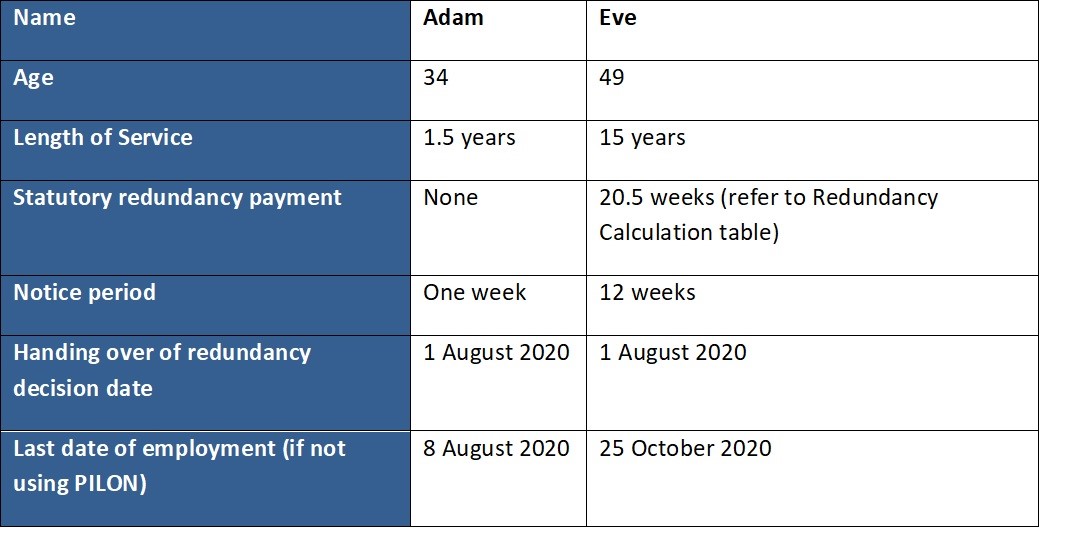
Redundancy Case Study
Please see below a case study on redundancy to help advise you on the process going forward with a example.
Jane employs four electricians. She only has enough work for two electricians going forward. Alternative means of preserving employment have been exhausted, and it is decided that two electrician jobs will be made redundant.
Jane holds a consultation meeting with each of her four electricians to explain:
- That there is a need to make these redundancies, and why
- That their job is at risk (confirmed in a letter)
- What the redundancy process will be
- What criteria will be used to score for redundancies
Jane decides to score based on the following things:
- Attendance
- Disciplinary record
- Relevant skills / qualifications
A score is arrived at for each operative whose job is at risk. The two operatives with the weakest scores out of the four are chosen for redundancy. All four operatives whose jobs have been at risk are met with individually again and provided with a copy of their own completed selection matrix which shows their own score against each criterion, and their own overall score. They will also now be informed whether they themselves will be made redundant or not, based on the selection process.
This decision should now be confirmed in writing, and this document must include details on the operative’s right to appeal the decision. This letter should also detail any redundancy payments due and how they have been calculated, the amount of redundancy notice due, the date of the employees last working day, and whether the company is willing to offer PILON (pay in lieu of notice) if this is provided for in the contract of employment. If an operative believes that their score is wrong, they can appeal, and if upheld, their score could be amended.
As a result of the selection process, the two operatives made redundant are:

The company follows the timeframes as set out above, continuing throughout to provide the benefits and working conditions which have existed prior to the redundancy process right up until each electrician’s last date of employment, if not using PILON. During this time, Jane allows reasonable amounts of paid time off work for Eve to look for new work or training opportunities, but is not obliged to do the same for Adam.
SELECT hopes that this case study example contributes to your knowledge of redundancy circumstances.